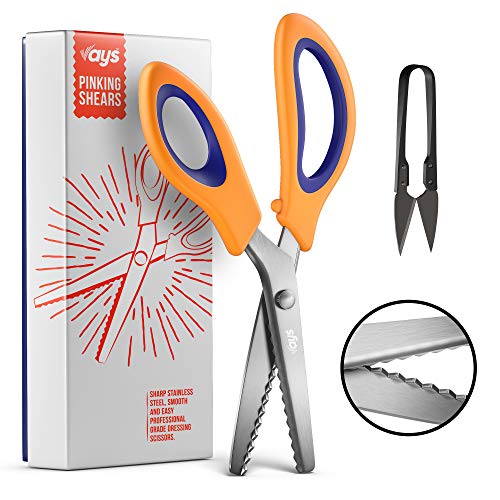Understanding Pinking Scissors
Pinking scissors are primarily used to cut cloth or fabric with zigzag edges. These specialized scissors are ideal for creating a neat and consistent edge that will not fray over time. However, overuse of these scissors can lead to a buildup of lint and fabric debris, which can hinder the scissors’ cutting ability. Proper cleaning of pinking scissors is essential to ensure optimal performance and extend the overall lifespan of the tool.
Cleaning Pinking Scissors
Cleaning pinking scissors is a relatively easy process that can be done at home with a few simple tools. First, use a soft-bristled brush, such as a toothbrush, to gently scrub away any lint or debris that may have accumulated on the blades. Next, apply a few drops of oil, such as WD-40 or sewing machine oil, to the center screw. This will lubricate the blades and prevent rust from forming over time.
Storing Pinking Scissors
Proper storage of pinking scissors is also critical to their longevity. When not in use, pinking scissors should always be kept in a dry, cool place to prevent rust or corrosion. It is also important to keep them away from other metallic objects that could potentially damage the blades.
Additional Tips for Maintaining Pinking Scissors
When cutting through fabric with pinking scissors, be sure to apply steady and consistent pressure to avoid damaging the blades. It is also recommended to avoid cutting through heavy or thick materials, as this can weaken the blades over time. Finally, for extra protection, consider investing in a specialized scissor holster or sheath to prevent accidental damage or dulling of the blades.
The Bottom Line
Proper maintenance and cleaning of pinking scissors is essential to ensure they perform at their best and have a long lifespan. With a few simple steps, pinking scissors can easily be kept in great condition for many years of use. Remember to clean the blades with a soft brush, lubricate the screw with oil, store the scissors in a cool and dry place, apply consistent pressure when cutting fabric, and protect the blades with a specialized holster or sheath.






